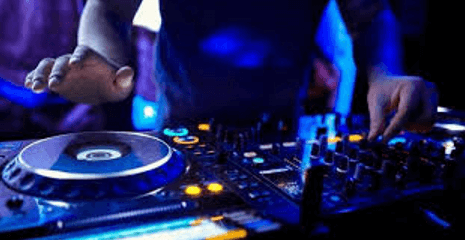Exploring the Art of DJing: A Comprehensive Overview

In the realm of music, DJs hold a unique and influential position. They are the maestros of the modern era, weaving together beats, melodies what is a dj, and rhythms to create seamless sonic experiences. But what exactly is a DJ, and what do they do on stage? Let’s delve into the captivating world of DJing to understand its nuances and intricacies.
What is a DJ?
At its core, a DJ, short for disc jockey, is an individual who selects and plays recorded music for an audience. However, the role of a DJ extends far beyond merely pressing play on a playlist. DJs are curators, tastemakers, and performers all rolled into one. They possess an innate ability to read the crowd, gauge the energy of the room, and seamlessly transition between tracks to keep the dance floor alive and pulsating.
The Essentials of DJing
To excel in the art of DJing, several essential skills and components come into play:
1. Music Selection: A fundamental aspect of DJing is selecting the right music for the audience and the occasion. DJs spend considerable time digging through vast collections of tracks across various genres, searching for hidden gems and crowd favorites. The ability to curate a cohesive and engaging setlist is crucial for captivating the audience.
2. Beatmatching and Mixing: Beatmatching involves aligning the tempo and beats per minute (BPM) of two tracks to create a seamless transition between them. DJs use headphones and cueing techniques to synchronize the beats, ensuring a smooth flow from one track to the next. Mixing involves blending the EQ (equalization), volume, and effects of two or more tracks to create a harmonious sonic journey.
3. Equipment Mastery: DJing requires proficiency with specialized equipment such as turntables, CDJs (Compact Disc Jockeys), mixers, and DJ software. Each component plays a vital role in shaping the sound and facilitating creative expression. Modern advancements in technology have expanded the possibilities for DJs, allowing them to incorporate live remixing, looping, and sampling into their performances.
4. Reading the Crowd: A skilled DJ possesses the ability to gauge the mood and preferences of the audience in real-time. By observing the crowd’s reactions and energy levels, DJs can adjust their setlist and mixing style accordingly to maintain engagement and excitement on the dance floor.
The Art of Performance
Beyond the technical aspects, DJing is a performance art form that requires charisma, stage presence, and showmanship. A DJ’s ability to connect with the audience, build anticipation, and create memorable moments elevates their performance from a mere playlist to a captivating live experience. From dynamic transitions to crowd interaction, every element of the DJ’s performance contributes to the overall atmosphere and vibe of the event.
Read also: Unlocking the Potential of Proguard
The Evolution of DJ Culture
Over the decades, DJ culture has evolved and diversified, encompassing a wide range of styles, techniques, and subgenres. From the underground clubs of Chicago and Detroit to the massive festivals and arenas worldwide, DJs have become synonymous with nightlife and entertainment culture. The rise of digital platforms and social media has further democratized DJing, allowing aspiring artists to share their mixes, connect with fans, and build a global following.
Read also: 10 Tips for Using Instagram’s Shop Feature Effectively (2024)
Conclusion
In essence, DJing is much more than just playing music – it’s a dynamic blend of art, technology, and performance. From the meticulous craft of beatmatching to the electrifying energy of live shows, DJs wield a profound influence on the way we experience and interact with music. So, the next time you find yourself on the dance floor, take a moment to appreciate the skill and creativity behind the DJ booth – it’s truly a sight to behold.





